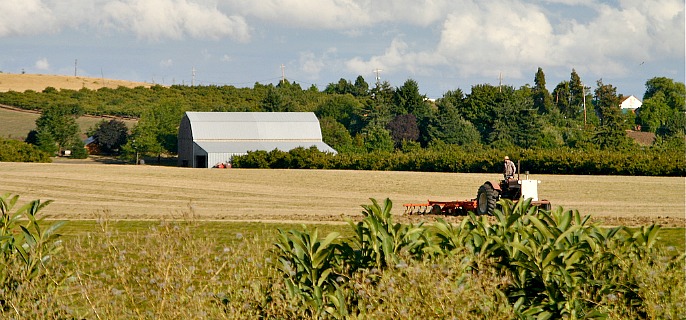Oregon farmers and ranchers generally have seen a better bottom line in their balance sheet thanks to steady agricultural production and prices combined with an overall drop in expenses.
The assessment is based on the latest statistics available from the US Department of Agriculture’s Economic Research Service (ERS). While Oregon’s diverse agriculture leads to a wide variance in how individual producers are faring, the state’s overall net farm income is on the rise.
“Historically, our production values have generally been going up from year to year, but the net farm income has been all over the place,” says Jim Johnson, land use specialist with the Oregon Department of Agriculture. “It’s that net value which reflects the farmer’s bottom line and is what they look at when they make decisions on their operation for the next year and ten years beyond.”
Numbers for last year’s income and expenses are not yet available, but the economic snapshot of Oregon for 2015 shows net farm income at more than $1.2 billion– a 58 percent increase over 2014’s net farm income and a 21 percent jump from 2013. It’s fair to say that net farm income over the past several years has been volatile and doesn’t always reflect what is happening at the individual farm level. But it is one of several indicators of agriculture’s economic health. Especially given Oregon’s tremendous diversity of agriculture– both in what is grown and in size or type of operation– there is bound to be disparity among the annual incomes of individual producers. But 2015 was generally a good year.
Net farm income is essentially a see-saw between production value– which reflects the prices paid to growers for what they produce– on one side, expenses on the other. It is the amount retained by agricultural producers after paying all business-related expenses Think of it as the farmer’s paycheck. Out of that paycheck, growers make payments on land purchases, family living expenses, and family health insurance. USDA-ERS statistics show net farm income is cyclical. They also show that the average payout for Oregon farmers and ranchers may not be as high as you would expect from an overall net farm income that exceeds a billion dollars.
“On the whole, Oregon farmers and ranchers are doing better over the past few years,” says Johnson. “But the overall improvement in income has not spread across all producers. Based on 2015’s net farm income, the average farmer in Oregon earned $35,000. Of course, some made a lot more than the average while others made a lot less.”
The overall value of agricultural production in 2015 actually dropped about 6 percent to about $4.9 billion. That includes a decrease in crop production of 4 percent, animal production of 7 percent, and 10 percent in farm-related income– a catch-all category that includes rental payments received.
Production values were down, but the expenses were down by a much greater degree.
Controlling costs, usually a major challenge for farmers and ranchers, wasn’t as daunting in 2015. In fact, overall production expenses decreased 13 percent compared to the previous year. Nearly all categories of expenses showed a drop, with the exception of seed purchases and electricity. Feed purchases dropped 10 percent, livestock purchases were down 15 percent, pesticides purchased decreased 12 percent, and fertilizers purchased recorded a 3 percent drop. Other expenses included fuel and oil, down 31 percent; machine hire and custom work, down 34 percent; marketing and transportation, down 21 percent; repair and maintenance, down 12 percent; and insurance premiums, down 25 percent.










